Since getting out of Morocco, I’ve come to the conclusion that we have enough chatter about the current global health crisis in our news feeds. I don’t need to contribute to that. So while so many of us are stuck indoors I’m going to do my best to post a blog post every day with a bit of photography inspiration. Sometimes it’ll be relevant to the video I post on my YouTube channel, as is today’s post from Morocco. Other times it’ll be a random photography blog that I’ve been waiting to publish.
So for now, let’s get into the chatter about photography in Marrakesh.
Where to Stay in Morocco – Riads vs. Hotels
Before we get into the content about street photography in Morocco, you’re going to have questions about where to stay in the country. You’ll see when you go to book a place that generally you have 2 options: hotels, or riads. Essentially, riads are converted mansions (or large family homes) that have turned into guesthouses or small hotels.
Generally, the riads are nicer and have better locations. Hotels in Morocco are generally found on the outskirts of the cities. The riads are usually right in the center of the action. You should definitely base your photography stays around riads. Many of them are photo locations in themselves. The best place to find good prices on riads in Morocco is here.
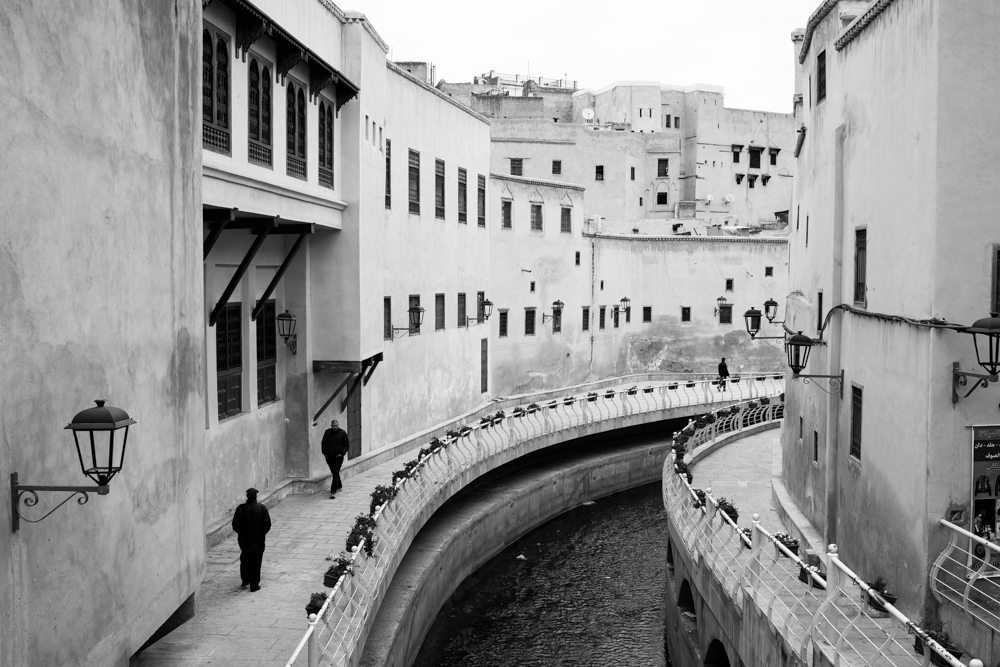
Best Photo Locations in Morocco for Street Photography
If you’re looking for a more general list of photography locations in Morocco, head here. I put together a list of all the hot spots for travel there.
However, in this article I want to focus more directly on good places for street photography, more specifically. I should also note that this list is ever-growing and if you want to contribute to it please leave a comment below.
Marrakesh
Of all the towns in Morocco, Marrakesh definitely feels the most touristy. Due to the plethora of cheap flights from Europe that arrive here, this is sort of the hub of travel in the country. It’s also the place most likely to attract the type of tourist who might just be going away for a long weekend. For many street photographers that might mean it’s an easy destination. For others, they might be looking to get away from the crowds a bit more.
In general, there are 3-4 locations in Marrakesh that are great for street photography. But honestly, you really could get images almost anywhere.
Koutoubia Mosque
Especially around sunset, this is the place to be wandering. Spin a couple laps around the mosque and you’ll definitely find an image or two.
Also, don’t forget to explore the park that’s behind the mosque. There are always really interesting photography subjects wandering around that area, and the backdrops for images there are awesome.

The Kashbah
For me, the narrow alleys around the Kashbah are my favourite place in Marrakesh to take photos – of any kind. There are lots of options for street photography locations here. I love the scale of the walls of the Kashbah. I also love the simplicity of the walls that make it up. It creates the opportunity for some more minimalist street photography.
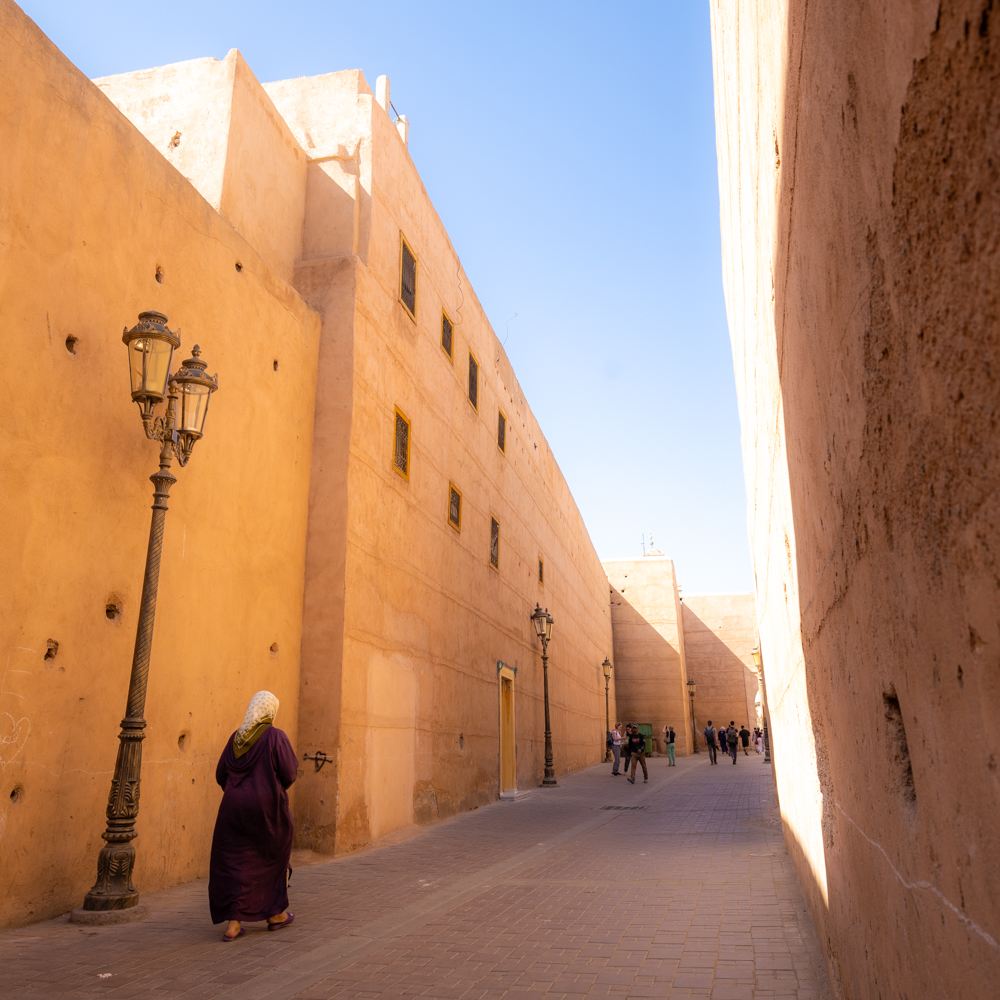
The Souks of the Medina
There are images to be made anywhere in the medina. But, if you’re looking for crazy bouncing light and shadows, the souks are where it’s at.
Souk essentially means “the shops”. And in the medina many of those shops have now become tourist related. But, you’ll definitely still find local shopping stalls.
Personally, I like to head here either first thing in the morning as people are setting up their shops, or in the early afternoon when most people are avoiding the heat of the day.

Place Djemaa el Fna
This is the center of the medina. It’s one of the only open spaces in the medina. During the day, it’s fairly tame. But at night the market comes alive. In the square a bunch of food stalls open up, and entertainers come out to preform. It’s a fun place to be at night.
Chefchaoeun
For a long time now Chefchaoeun has been a favourite of backpackers. Then a couple years ago it exploded with popularity among instagrammers and regular tourists from around the world. It went from being a secret gem in the Rif Mountains – which is how I found it 8 years ago on my first visit to Morocco – to a very heavily touristy town now.

Still, Chefchaoeun is an absolute gem. It’s one of the most photogenic places in the entire world.
For street photographers, there’s plenty to photograph. And, honestly, it’s almost pointless for me to point out locations because there’s a location on every corner.
Moreover, so many of the photos here are based more on the people than they are the exact spot. I will say, though, that if you’re the type of person that likes to get up early and photograph the people as they start their day, things start late here. In fact, most people in Chefchaoeun don’t start hitting the streets of the medina until 8-9am. It means you can sleep in, or photograph the empty streets.

Fes
The medina of Fes is the largest walled city in the world; as far as I know. It’s also one of the best places in the world for street photography.
That said, Fes can also be very frustrating. Nowhere in the world have I seen people more desperate to get money from tourists, but simultaneously abusive to tourists. Walking around Fes, you’ll have countless people approach you trying to guide you. When you say no, they’ll almost definitely hurl insults.
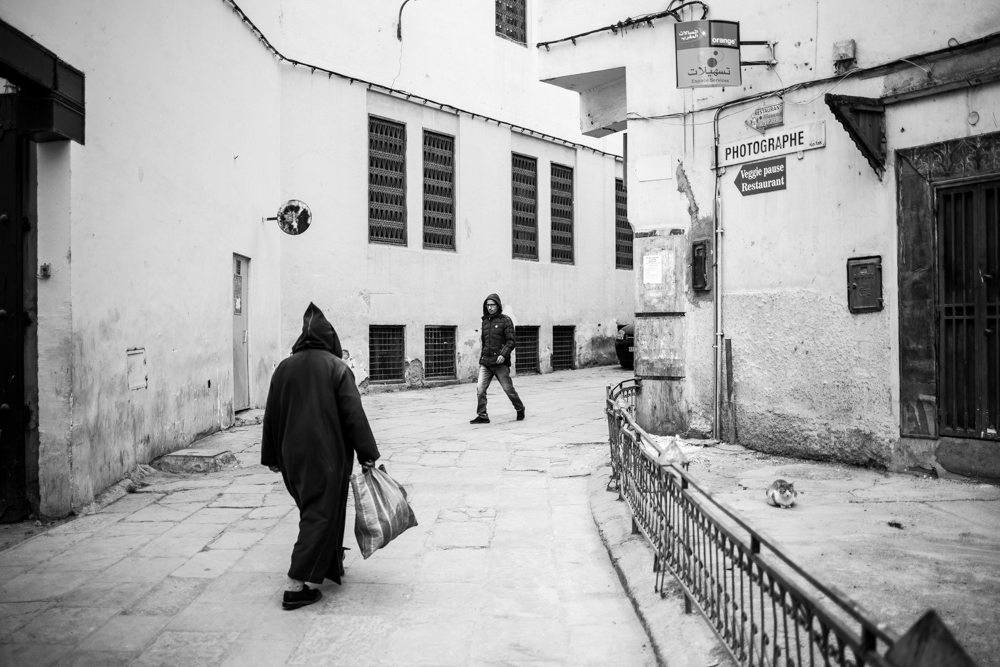
As a photographer in Fes, it makes a lot of sense to tread slowly. I’ve seen tourists have things thrown at them for taking pictures without asking. Heck, I’ve seen tourists be yelled at simply for having a camera out.
My advice is to hire a professional guide for your first day in Fes. They’ll give you a nice introduction to the city and control the surroundings. It makes for a much nicer experience. Just be sure to hire an actual guide, don’t just pick someone off the streets.
If you can get past that, you’ll find some of the best photo opportunities in all of Morocco here.
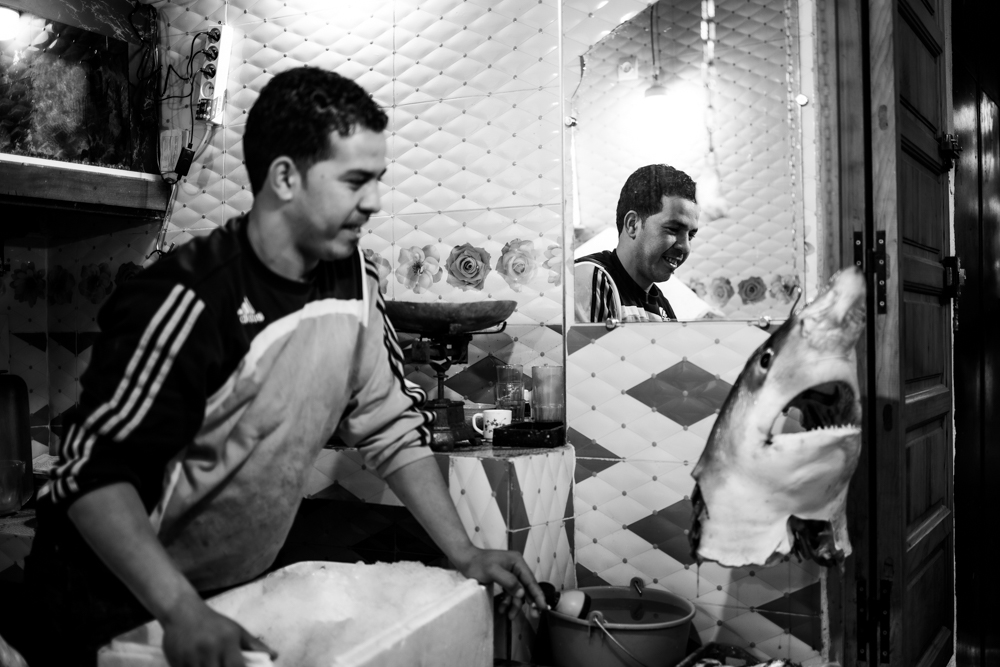
Meknes
I think Meknes is underrated. It’s the old capital, and much of the population is slowly leaving for cities like Fes, Casablanca, and Marrakesh. But, there are a lot of photos to be had here. Start at the gates and the main square. You’ll find plenty to photograph in a short distance.
Don’t Forget the Small Towns
Every time I go to Morocco I end up in a different small town and wonder why it’s not a tourist town. This most recent trip we stopped for lunch in Moulay Idriss Zerhoun which is near the Volubilis Ruins and absolutely loved it. I think that there are definitely a bunch of photos to be made there. If I make it back to Morocco, I’ll definitely be spending a night in this town.

I should also note that there are usually some good street-style photos at the Volubilis Ruins themselves.

What small towns in Morocco do you think are most photogenic?
Photographing People in Morocco
I’m sure that you’ll hear all the horror stories about people in the medinas of Morocco. Most of the stories are exaggerated. The average person in Morocco is extremely helpful and kind. However, there is a small percentage of people that linger in tourist areas and spend all their time trying to scam tourists. They use aggressiveness to make you feel uncomfortable, and hopefully convince you into feeling guilty and giving money.
The best tactic in Morocco is to hire a personal guide to take you around. And if you go around on your own, do your best to ignore the hustlers.
And most of all: be respectful! It’s easy to lose your cool sometimes in Morocco. No matter what, look people in the eyes, smile, be firm in your “no thank you”, and move on.

Ask Permission
I can’t stress this enough: you need to ask permission before taking portraits of people.
Now, if you’re photographing a street scene in general, you obviously don’t have to go around asking for everyone in the frame’s permission. However, if you’re getting in someone’s face for a photo, please ask permission.
In Arabic, the term for “can I take your photo, please” is something like “Mumkin Asawark”. I think it translates directly to “your photo is possible?” If they agree they usually say “Mumkin” back to you. I learned this in Oman, so I’m not sure it works in Moroccan Arabic, but anytime I’ve used it in Morocco, they understand.

Don’t Give Money to Children
Ethically, I have no problem with paying people for photos. They are models. Just bear in mind that doing so might set a bad precedent for anyone else who takes a photo. Personally, I don’t do it. Instead, I tend to buy something small from a shop if someone agrees to letting me take their portrait.
That said, do not give money or candy to children in return for photos.
This can lead to 2 things. It can lead to kids thinking that this is a reliable way to make money. And, it can lead to parents and adults exploiting children. You already see it in Morocco a lot. Kids selling things, and then an adult lingering in the background watching them. Paying kids for photos leads to the exploitation of children.

Camera Gear for Street Photography in Morocco
If you know my work, you know that I tend to use a lot of zoom lenses and spend a lot of time taking pictures from tripods. In Morocco, however, I think my style changes completely. There’s something about this country that makes you want to photograph fast lenses.
This is my camera gear, and this is the camera gear that I’d take to Morocco.
- Camera Body
- It doesn’t matter too much crop vs full frame in Morocco. Although discreet is always best. So, mirrorless tends to be a little bit less “showy”.
- I take a back up camera body with me everywhere. I take my pictures on a Canon R and Canon RP.
- Lenses
- An Ultra-Wide: I think having a lens like the Canon 15-35mm f/2.8 that’s both fast and wide is great for the narrow alleys of Morocco.
- Something fast: I’d highly recommend bringing a fast prime with you too. Something like a 35mm or a 50mm.
- Something Tele-photo?: Honestly, I used my telephoto lens just once in Morocco this time. It feels very much like paparazzi photography, which I’m not a fan of. But, if you’re uncomfortable getting close to your subjects, this can help with that.
- Accessories
- Tripod: I would bring a small travel tripod. I don’t tend to use one for street photography, but it’s nice to have just in case.
- Memory: Don’t forget your memory cards. And don’t buy any in Morocco. Most of the memory cards they sell here are fakes.
- Filters?: For street photography, sometimes it’s fun to use a variable ND to play with different shutter speeds. But, in Morocco most of the alleys are dark enough that you don’t need an ND filter to get the shutter speed low enough.
- Camera Bag: I’d highly recommend bringing a fairly small camera bag to Morocco. There’s not a lot of space, and if you have a big bag it will get in the way. 30L is probably ideal.
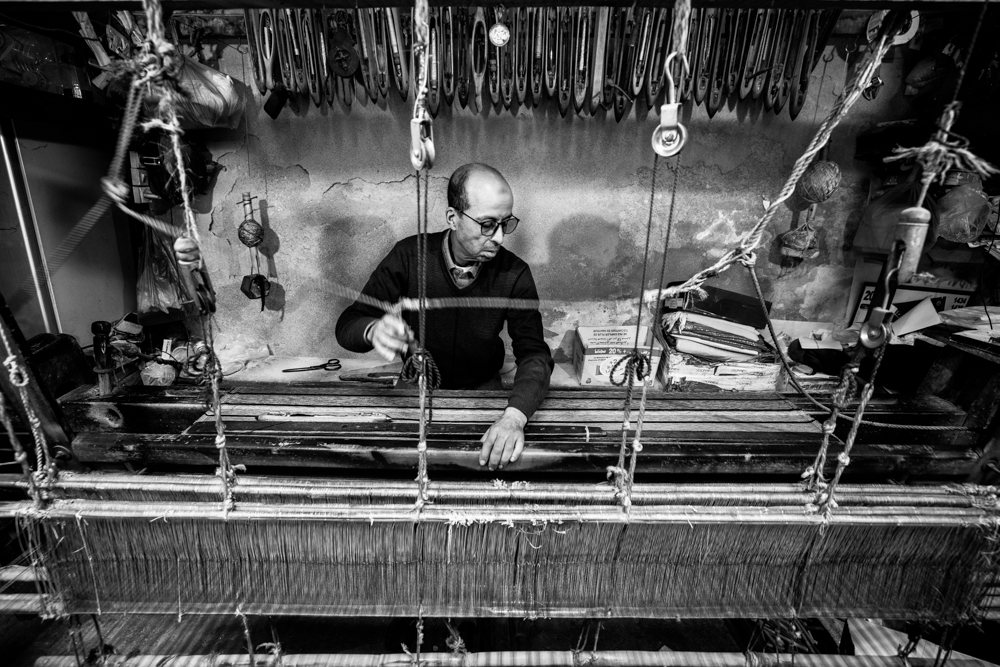
Tips for Safe Travel to Morocco
Morocco is a very safe country to travel. Let me be clear about that. Violent crimes are extremely rare and the tourist police in the country is actually fairly helpful when needed.
However, it’s pretty common for tourists to feel unsafe here. High-pressure sales are common, as are scams. But, the vibe and the reality are quite different.
I wanted to end this blog post with some thoughts about how to stay safe and comfortable in Morocco.
Getting Around
There are 3 ways to get around Morocco without flying. Each have their advantages.
- Private Car: Getting a private car from town-to-town is comfortable and will get you door to door. But, it’s not cheap. Generally, you’re looking at about $150 for a car between two major cities. These can be arranged with any hotel or riad.
- Bus: The buses get around the country fairly quickly. And though they vary in degrees of comfort, they are fairly comfortable. But, they can be a hassle. You’ll see a local get one price, and then have to fight with someone to get anything close to that price. Then, when you think you’ve paid, they’ll try to ask for even more money for luggage – which you’ll again have to argue. This is the cheapest way, but also the most frustrating. You’ll also have to pay for a taxi (or walk) from the bus stations to your hotels or riads.
- Train: In general, the train is my favourite way to travel the world. The trains in Morocco are great. If you have the chance to catch the train, do it. The only downside of the train is that it’s a bit slow and the destinations are limited. You can get to most cities, but places like Chefchaoeun and Essaouira are off the route. Prices are very reasonable as well.
Safe Travel Tips
- Always set a price upfront. No matter what you do, always set a price up front. If they say “no, we’ll worry about that later,” it’s because they’re going to drive a hard bargain because you already took the product and have no way out.
- They aren’t trying to help you. If someone approaches you on the street and tries to help you to your hotel, or offers to show you around, they’re not doing it out of the goodness of their hearts. They’re trying to hustle.
- Watch your camera gear. Most of the crimes in Morocco are crimes of opportunity. Don’t be careless.
- Download offline maps. Either using google maps or maps.me on your phone, download the offline maps for a city before arriving. Moroccan cities are mazes, and finding your accommodation can be a mission sometimes. Having the offline maps means you’ll be able to get where you need to even without cell connection.
- Get a local SIM card. Orange is likely the best Moroccan SIM card to get. Having access to data will keep you connected to things like maps and social media if you need it. Data is fairly cheap here. You’re looking at about $20 for 20GB.
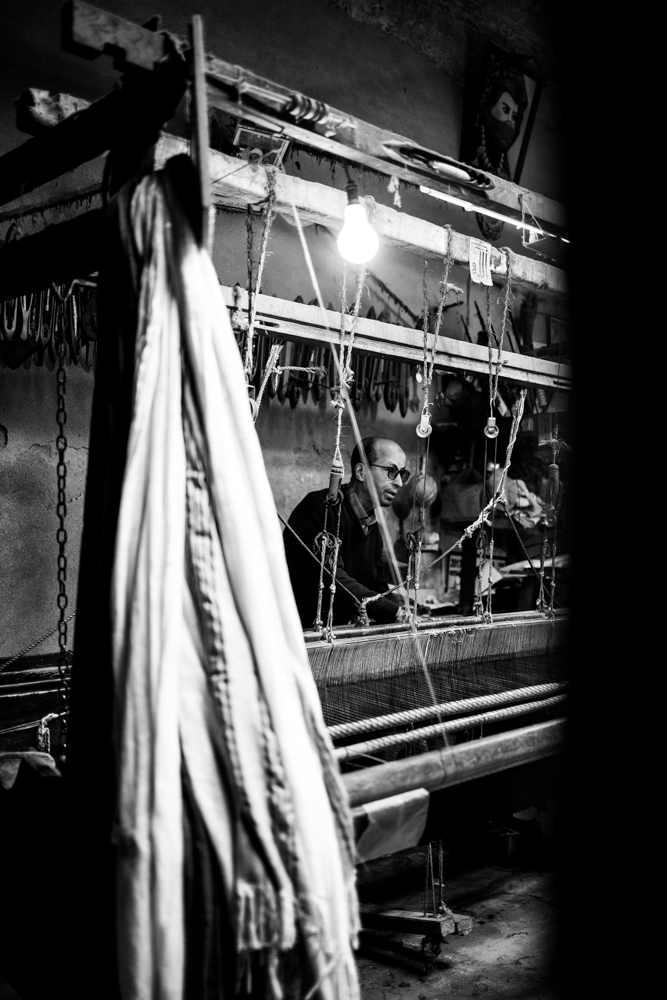
A Tour to Morocco?
After our last tour to Morocco was cut short by the 2020 health crisis, I’m itching to head back. However, with all the other trips that have been pushed back a year or so, I can’t see it happening until 2023.
Still, if you’re interested in the potential of joining us in Morocco for a photography trip, or you’re interested in hearing about some of my other upcoming trips to places like Iceland, Patagonia, and Tasmania, be sure to sign up for the newsletter below.